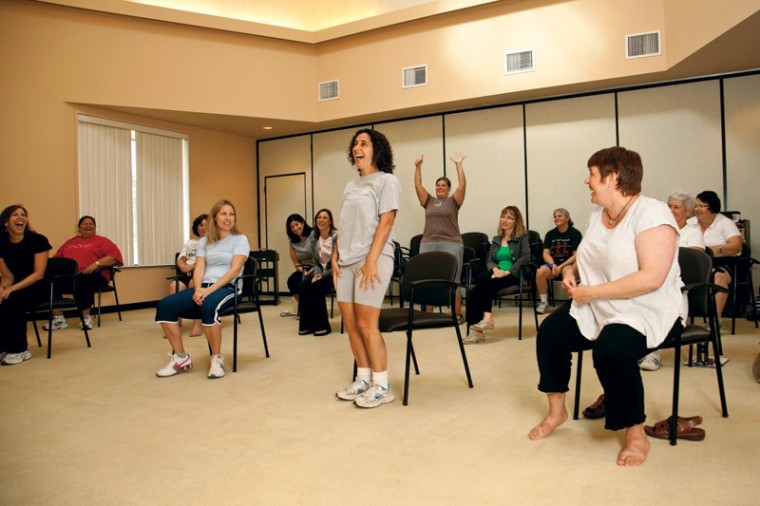RJA puts the moves on learning
Published August 18, 2010
It began with toe touches, then jumping jacks and fingertips to opposite knees before everyone gathered in the gym to swat the wall with one of those foam noodles used to stay afloat in a swimming pool. Suffice it to say, this was not your typical teacher development seminar.
But the 15 or so educators at Saul Mirowitz Day School – Reform Jewish Academy (RJA) were attentive and well engaged Thursday as they listened to Pete Trapani discuss the importance of using movement to encourage learning.
ADVERTISEMENT
Trapani is a personal trainer and physical education consultant who has been traveling the country, advocating the benefits of movement, exercise and fitness to help stimulate classroom learning. He graduated from Washington University and operates 360 Fitness for Life & Health LLC, which is based in Wildwood, where he lives.
Trapani came to RJA at the invitation of Cheryl Maayan, head of school, who thought his presentation would resonate among the teachers. Several said they already practice what Trapani was preaching.
He began by having the teachers stand and touch their toes 20 times to get their heart rate up. Then he explained that every 20 minutes or so there would be another exercise, which was exactly what he suggested the teachers do with their students when they are teaching.
“Movement is important because of the plasticity of the brain,” he said, explaining that plasticity has to do with the brain’s capacity to change and grow. “Exercise and movement help build neuro networks in the brain, which can further learning.”
ADVERTISEMENT
During the class, Trapani referred to several studies that underscored the connection between exercise and cognitive function. Among them: a 2008 book by Harvard professor and psychiatrist John Ratey called “Spark: The Revolutionary New Science of Exercise and the Brain,” which states that our brains get flabby when our bodies get flabby. According to the book, studies show that exercise promotes neurogenesis, the growth of new neurons in the brain.
Exercise helps reprogram the brain, said Trapani, adding that some types of exercise are better than others. Martial arts, dancing, gymnastics and swimming are more complex, he said, and stimulate the brain more. But he was quick to add that any motion is better than no motion.
Trapani also said that while physical education classes are vital, they do not provide enough movement to last the entire school day. Classroom teachers need to provide additional outlets for kids to move, and can easily do so by incorporating physical exercise into learning activities, he said, using several simple games to illustrate his point.
Physical education teacher Marilyn Brickson nodded in agreement as Trapani spoke. “I’ve always known that movement is very positive for a child’s development,” said Brickson, who has been teaching at RJA for 11 years. “I like that he is emphasizing movement in the classroom and getting a positive effect with even small doses of it over the course of the school day.”
Several teachers said they were already aware of the strong connection between exercise and learning, though they felt much of what Trapani said crystallized this link. They looked forward to taking what was already practiced and making it a standard at the school.
“It’s reinforcement for me,” said first grade teacher Leiba Levine at a break in the two-hour session. “We always use movement, incorporating academic games with physical movement to get the kids stimulated.”
Some teachers said they configure their students’ desks to maximize walking in the classroom. Maayan said the school instituted a morning recess so that any child dropped off at 8 a.m. can play for 15 to 20 minutes before school starts. “We found that those early recessers were doing better in school,” she said.
Third grade teacher Val Toskin said she has rugs in her classroom for students to work if they want to stretch out or move away from their desks. “Not moving in my classroom is not an option,” she said.
“Teachers really have to set the example by moving themselves,” she added. “I am always moving, no matter how ridiculous I may look. There are balls for the kids to sit on and this year, I want TheraBands (latex bands) on every seat. One of the items on my school supply list is Play-Doh so that my fidgeters can squeeze it while I am talking.”
Trapani was pleased with how accepting the teachers were and how interested they seemed in the research on this topic. “The next step (on a global level) is to re-program physical education teachers and get them to coordinate with classroom teachers to make movement and exercise an intrinsic component of the school day. It is just so essential.”
















